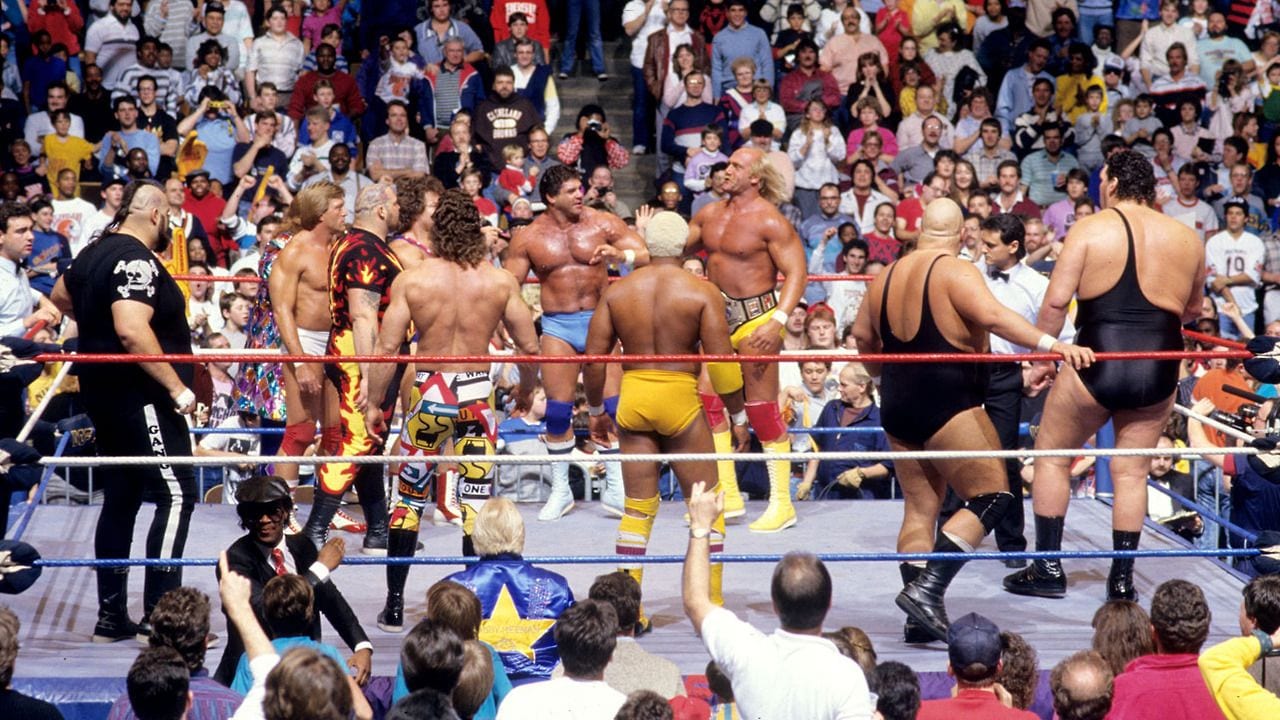EVENTS
Page 68: Twin Peaks Passion Play
Page 68 is probably the most important page in the whole Access Guide.
In his Deer Meadow Radio interview, Harley Peyton had this to say about seeding future plot points into the Access Guide:
Sometimes we were just doing our jobs and other people would find mystery in it. […] then the theories come back to us, we start implementing them into the show.
That said, I am confident that there are elements ripe for use in what could have been the Twin Peaks Season 3 that would’ve aired during the ‘91-‘92 TV season.
This page describes 12 ancient Douglas firs that form a circle and “appear strong enough to support the sky,” found in Glastonberry Grove. The first paragraph suggests how the trees have stories to tell if only they could. Despite a conspicuous lack of the word “sycamore,” this is where the Passion Play occurs.
Here are the particulars:
- It is an evolving—rather than set—ritual.
- It occurs in April, though a specific day and time are never announced.
- The participants gather around the 12 Great Firs.
- Six cassocked figures emerge, bearing sword, chrysanthemum, crucifix, and chalice.
- The mysterious guardian of the gate appears from an untraceable location.
- Event sponsorship is unknown, but it’s rumored to be the “ultra-secret” Bookhouse Boys.
- The event lasts all night.
- At dawn, sunlight obliterates darkness as Good vanquishes Evil.
- The next Passion Play will occur sometime in April ‘92.
In the margin, we get a creepy image of a bearded man with whites for eyes, which to me says doppelganger. There’s also an image of the classic Bookhouse Boys patch.
What’s to make of all this?
- If it’s an evolving ritual, the TV writers could make it into any kind of scenario they wanted when the time comes.
- April of ‘92 would coincide with when Season 3’s concluding episodes would be airing on our televisions in the real world. (More evidence that books sync up with actual time rather than the show’s ‘89 continuity.)
- The sword, etc. match up well with Arthurian grail quests, which would also go well with the sword Harry receives from a Lodgespace figure in the Episode 29 script, as well as Arthurian ties to Theosophy.
- The guardian of the gate sounds a lot like this guy, who was also at the scene of the Briggs abduction in Episode 17:

What else does this page suggest? Thematically, light and darkness have been on the show’s mind even longer than the duality of Love vs. Fear. I bring up Margaret’s lesson of “push through the darkness and grow your light” that surfaces blatantly in The Final Dossier.
As interesting a detail is how the Bookhouse Boys are “ultra-secret.” I like the idea that they operate in town loud enough to be noticed, but quiet enough that the locals making the town’s Access Guide think the battle against darkness in the woods is less of a cyclical battle and more akin to some live-action Portlandia skit.
Pages 69-71: Packard Timber Games
The next three pages cover the events that take place a half-mile north of Sparkwood and 21 every August. The Packard Timber Games were founded in 1910 by James Packard, and the seven events are Caber Toss, Spinoff, High Climb, Bury the Hatchet (which Hawk is stereotypically the master of), Stone Throw, and Trunk Chop.
Each event is described in a short paragraph, sometimes logistically and sometimes with a silly anecdote that happened in past events. There are also large illustrations of men competing in some of the events. In the margins, we get the process of how to hang an ax.
Pages 72-76: What To Do and When To Do It
A four-and-a-half page calendar of community activities and events comes next. It oddly starts in December and skips over June and November.
- December has the Candlelighting and Christmas Tree Ceremony, along with the preschoolers’ Magi Pageant—complete with live camels and sheep. It goes all day. Carolers sing in turn-of-century costumes and Miss Twin Peaks turns on all the lights at the end.
- January has a Scandanavian tradition called Winterskol, which involves a lot of drinking and an ice castle competition.
- February has an annual Chess Tournament. Pete presides over it. Past noteworthy challengers include Vladamir Nabokov.
- March has my favorite of the events: the Caribou Festival, which takes place instead of St. Patrick’s Day. Competitors dress head to toe in fur & try to replicate the most accurate imitation of the caribou mating call. Why do I think this is so funny? Because I imagine Josie—the character most often seen in fur coats—choosing to forego her dignity and compete in this thing.
- April shows the Yellow Lupine Festival has a 10K run and is also what the Miss Twin Peaks competition is part of.
- May has the Gardens & Homes Tour, where residents open their homes to the public after furious cleaning. It’s put on by a secret women’s philanthropic society known as the PEO. It’s never mentioned again but could it be the equivalent to Bookhouse Boys? We’ll never know.
- July has the Fourth of July Celebration. There are lots of events like inner tube races, and we get our first mention of the Wagon Wheel Bakery. Angelo Wong—restaurant owner to be mentioned later—is the guy behind the extravagant fireworks display. It really gives a lived-in Whole Damn Town feeling when names like Wong, Tim & Tom’s, and even Unguin Packard keep popping up in different contexts.
- August has the Twin Peaks Timber Players putting on Theater Between The Bleachers at the high school.
- September is where the Packard Timber Games are listed even though its own section placed it in August; sometimes callbacks work better than others. But I do like how the event’s prize is called the Wooden Thing.
- October has the Halloween Parade, where the high school float reenacts historical events like the Smallish Earthquake of 1905 and the Horne’s float is Emory Battis—the guy who ran the perfume counter—on it dressed like a druid. I wonder if we were meant to make an association with Dugpas or if I did that all on my own. Either way, between that and the talk Dougie Milford makes at the high school about “the restorative powers of terror and darkness,” it sure feels like inadvertent (?) magic ritual put on by the whole town.
- The entire section’s margins are left empty, except for October, where we see an illustration of Groucho Marx-inspired fake nose and glasses “disguise.” That, I assume what the joke is, constitutes what could pass for a Halloween costume.
Page 76: Lumberjack Feast
On the bottom half of page 76, we get an explanation of the feeding frenzy known as Lumberjack Feast, held the last Sunday of the month at the fire department. All we learn here is Big Ed can pack in the pancakes, and that you should call 911 for more information.
DINING
Page 77-83: Dining in Twin Peaks
Page 77 is a location shot of the Double R counter all the way to the back wall, including that giant ice cream cone.
The page 79 margin features the Double R’s list of daily specials, but that’s not the draw here. Pages 78 and 79 make a two-page spread of Norma’s cherry pie recipe, which Rachel Stewart graciously baked for us here. Let’s see the results!
“This Pie is a Miracle”
Let me start by saying, I’m not a baker. I love The Great British Bake Off but I don’t envision myself ever getting a Paul Hollywood handshake. I do like to putter around in the kitchen, doing my best Nigella Lawson impression, making pots of soup or curry from whatever I’ve got kicking about in the fridge. (I can make Not Laura Moon’s Chili in my sleep now, which is helpful since I feel like hibernating most of the winter away.)
I love pie. I’m Southern, we have pie on any occasion—family reunions, weddings, funerals—but I’d never made a whole pie from scratch. And Twin Peaks Cherry Pie is the stuff of legend, so why not? Still, baking is like chemistry—there’s an exact science to it. You can’t chuck the directions out if you don’t like them.
Luckily, the recipe requires some stuff to happen in stages (i.e. overnight) so I didn’t feel overwhelmed making it. First comes the crust, which is flour, Crisco, and ice water (added at the exact right time) mixed together until you have a ball of dough that can sit overnight in the fridge. The filling uses frozen cherries which you let sit out overnight to thaw, letting their ruby red liquor seep out for the saucy bit.
Once all the components have had their overnight nap wrapped in plastic, then you get onto assembling the pie. I tended to the pie crust first, then the filling, which came together quickly (despite having to wait for it to cool). My latticework was a rustic effort at best, but it smelled heavenly during the bake (maybe this is where pies go to die), and then it came down to the hardest bit yet: waiting for it to cool.
I made it the better part of the day and shared the pie with friends—and it was good. The cherry filling was tart and sweet, and the crust was buttery. Everything an FBI agent could dream of. The recipe note about adding more or less sugar is spot on, and if I ever make it again, I’d like to try it with dark cherries, which would warrant an extra spoonful of sugar.
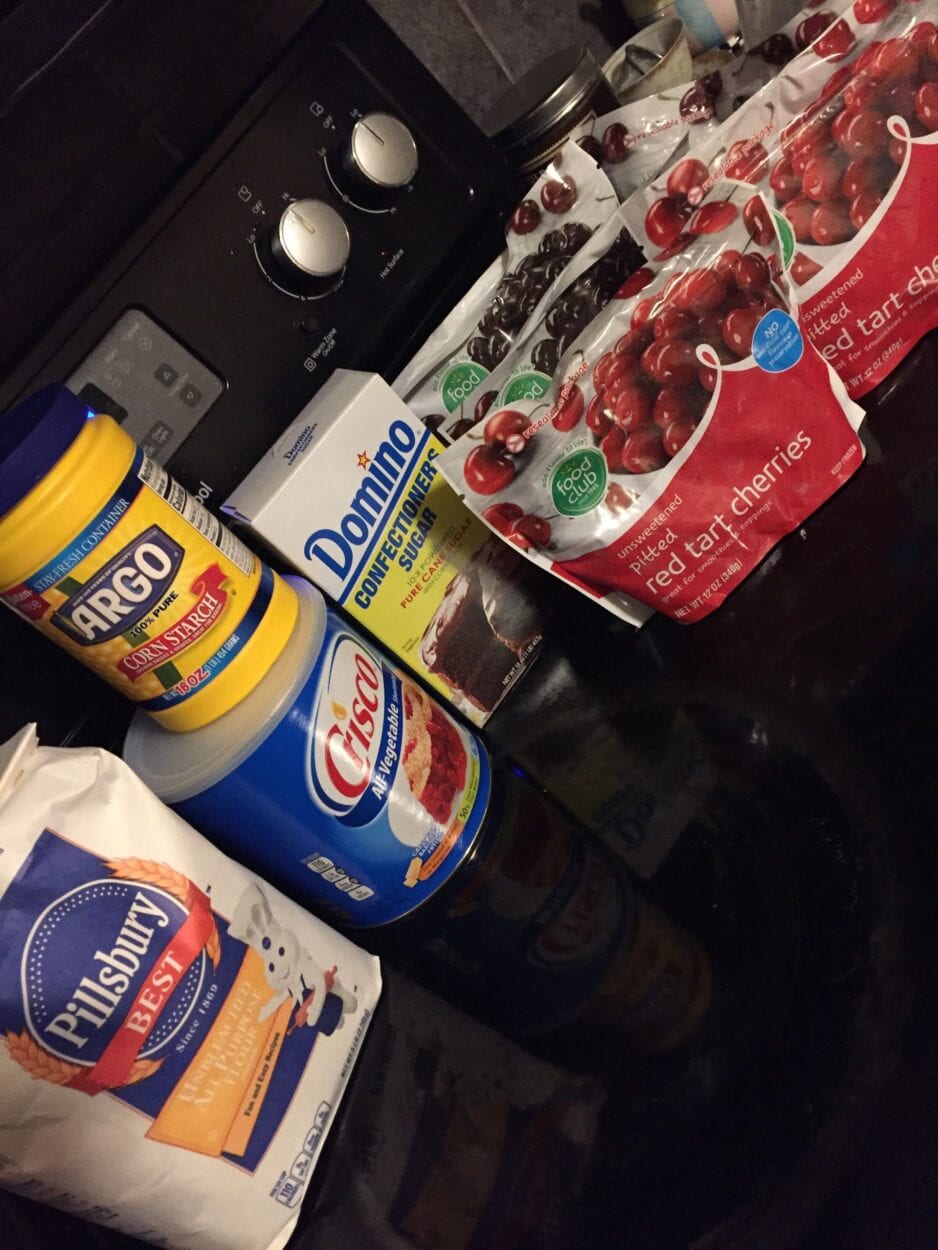
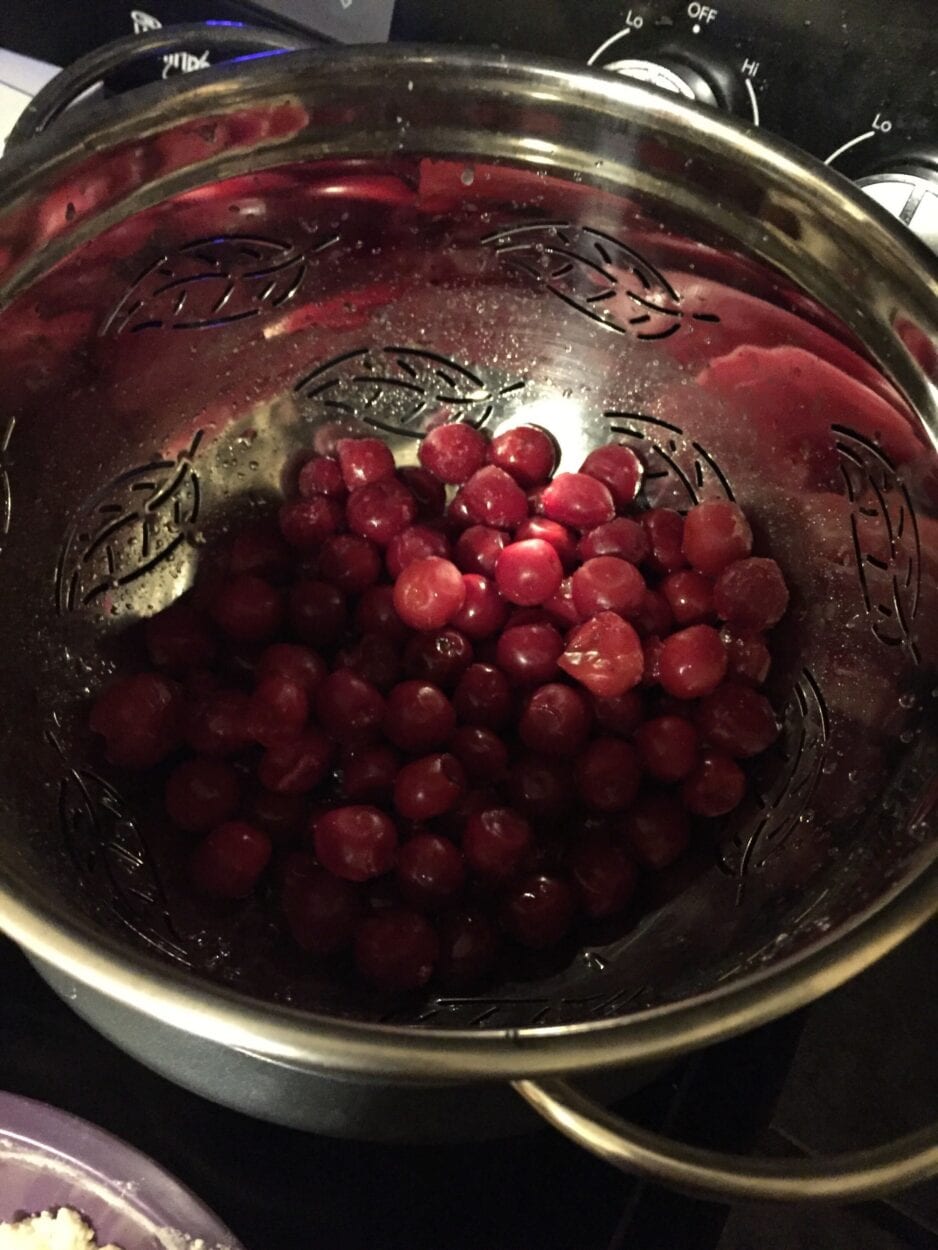



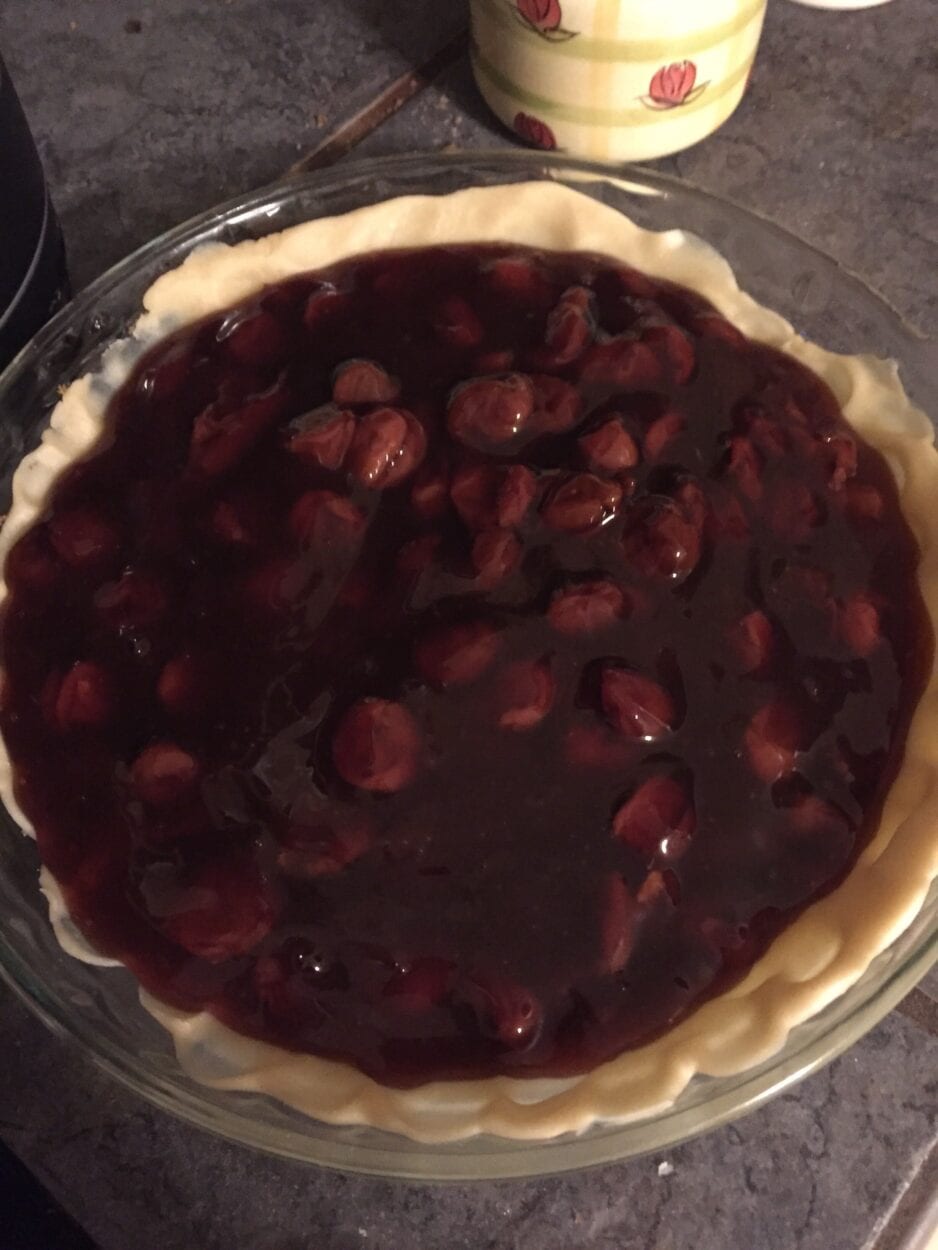
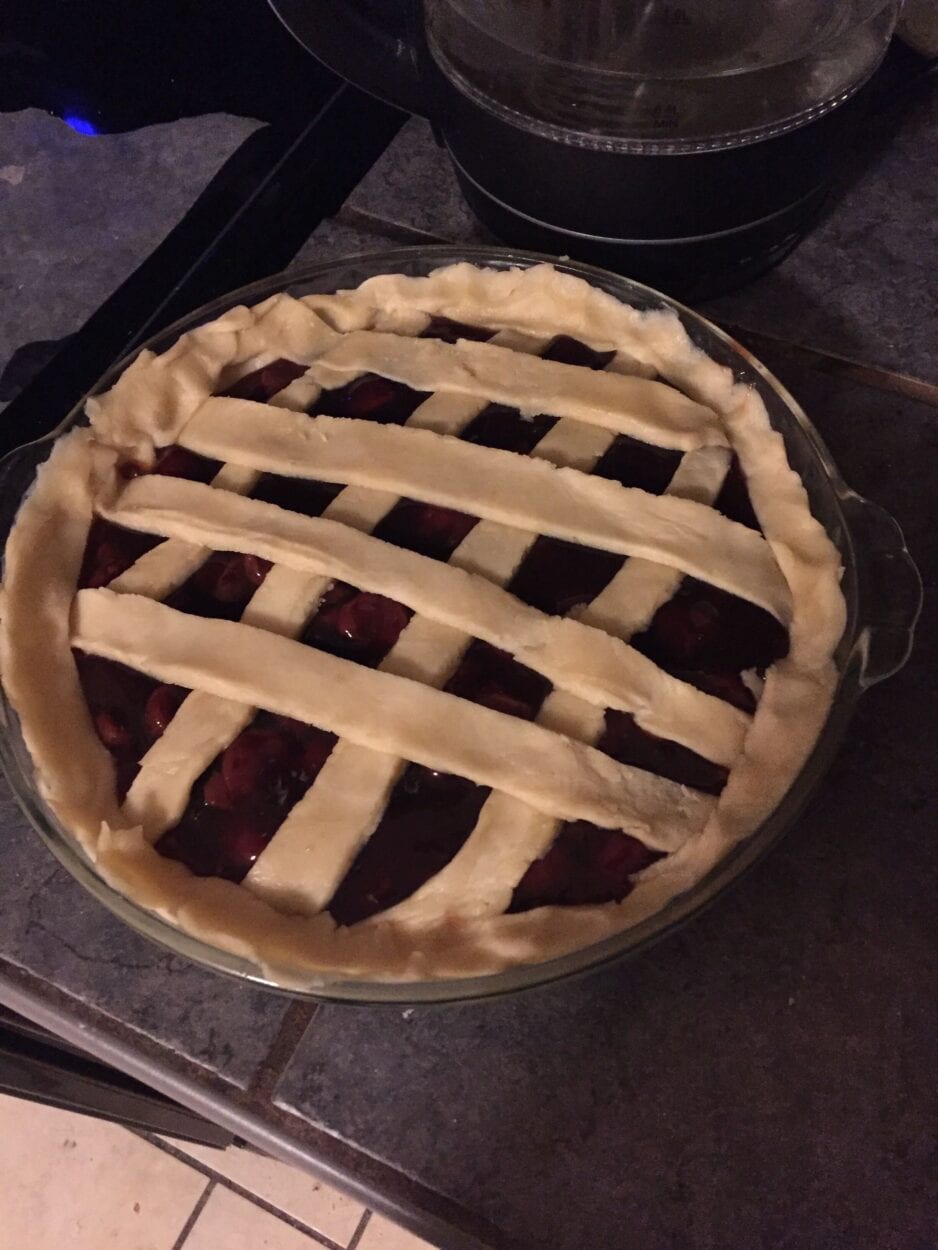

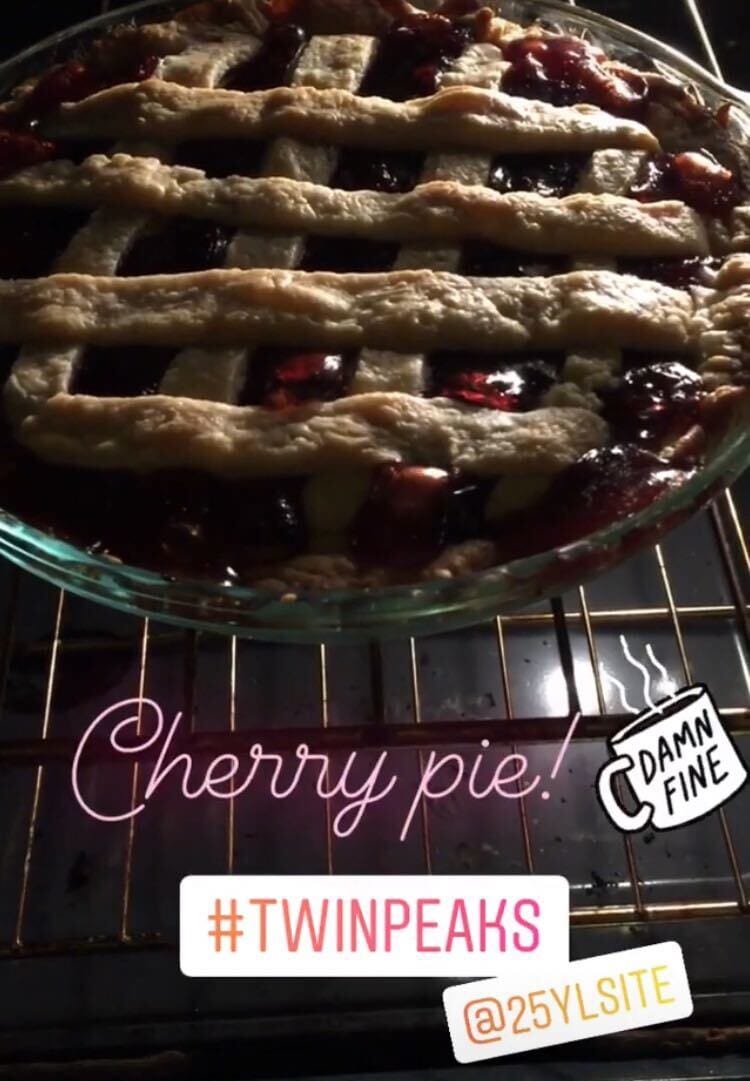
I love how time and patience is an actual requirement for the recipe. It makes me think of mindfulness and the love Norma puts into it. Very on-brand, intentional or not. Thanks again, Rachel, for being our baker!
Pages 80 and 81 hypothesize multiple possible origins for Twin Peaks becoming so doughnut-crazy, but like everything else, there’s no definitive answer by page’s end. There are giant illustrations of a variety of doughnuts, and details about the Wagon Wheel Bakery—supplier of all those spreads we see at the Sheriff’s Station. Their doughnut recipe is listed here, but it’s for an order of 106 and none of us have a fryer set up so we couldn’t test this one for you.
Page 82 focuses on the Double R, both in its look and what’s on the menu. If I wasn’t already hungry, Norma Jennings’ bio is in the margin talking about things like her hallucinatory meatloaf recipe. Filed under cute jokes, Norma likes talking to Big Ed and believes in longer prison terms.
Page 83 contains a list of every song on the Double R jukebox. It leaves off any reference to Angelo Badalamenti songs, but otherwise, Reddit user oysterboy1 assembled a Spotify list of all the songs here.
Pages 84-85: Dining Out In Twin Peaks
Pages 84 and 85 present short descriptions of a half dozen local restaurants, as well as the Great Northern Timber Room’s capabilities and a nod to the Lamplighter Inn—famous for being mentioned in Dale Cooper’s first monologue. Also mentioned: fireworks expert Angelo Wong’s Italian/Thai Restaurant and Ace’s Bar-B-Que, both of which I’d love to try if they existed in real life.
Page 84’s margin shows Eileen Hayward’s Coffee For A Crowd—which “serves 40 to 250 servings.” As with the donuts, 25YL didn’t have the space to test that recipe. Page 85’s margin has James Hurley’s bio feature—where I note his lack of mentioning the Passion Play.
LODGING
Pages 86-89: Lodging In Twin Peaks
Pages 86 and 87 is an establishing shot of the Great Northern’s interior, complete with the famous lobby fireplace where Cooper and John Justice Wheeler shared their only scene while pontificating on love.
Pages 88 and 89 give us short paragraphs on the Great Northern Hotel, LeAnn’s Country Inn, Snow Street Inn, The Willow Inn, Pine View Motel—where Phillip Gerard stayed, and Ben and Catherine held trysts—the Cozy Box Bed ‘N Breakfast, and Mrs. Thrimble’s Bed and Breakfast.
Page 89’s margin includes a simple floor plan of the Great Northern lobby. But both pages 88 and 89 include the bio for Great Northern Employee of the Year Trudy Chalgrin. Why so much for a barely-seen character? Because this is one of those moments Ken Sherer was talking about when he said this:
[We] kind of knew this was the end, and so in some ways we wanted to try to personalize it for ourselves, that we were here.
Trudy is played by Jill Engels, wife of writer/producer Robert Engels. Good move including your wife, Bob! Jill not only played Trudy, but she also worked behind the scenes. Among other things, she sat just off-camera in the Red Room scenes and fed people their backward lines.

